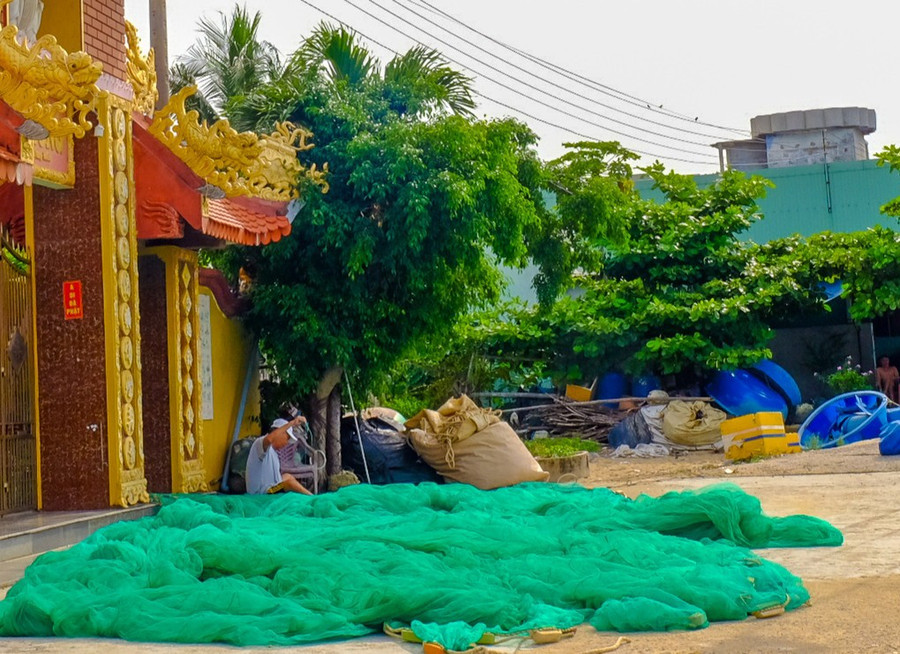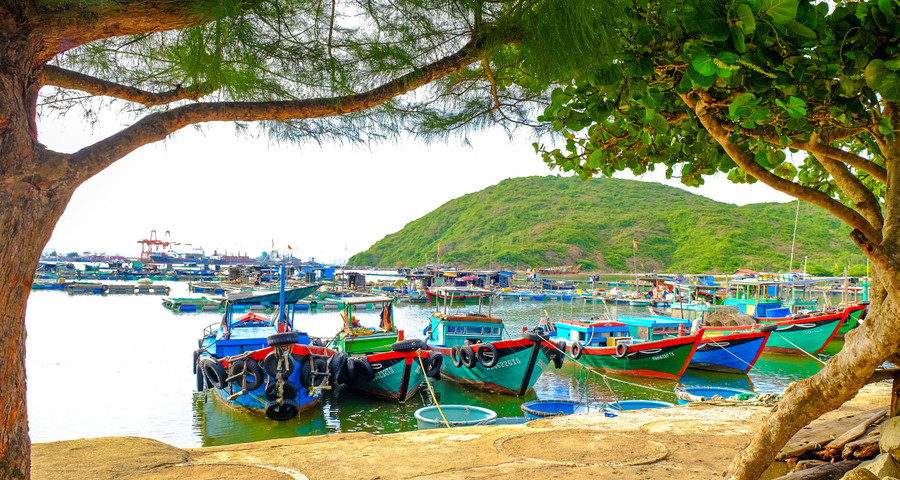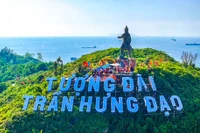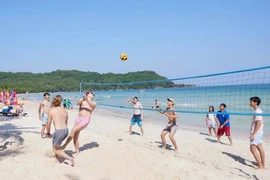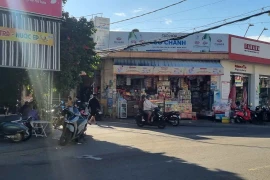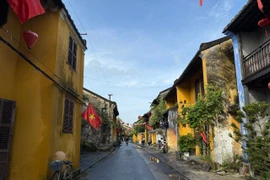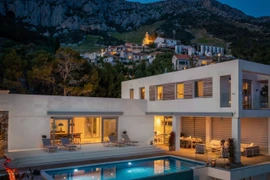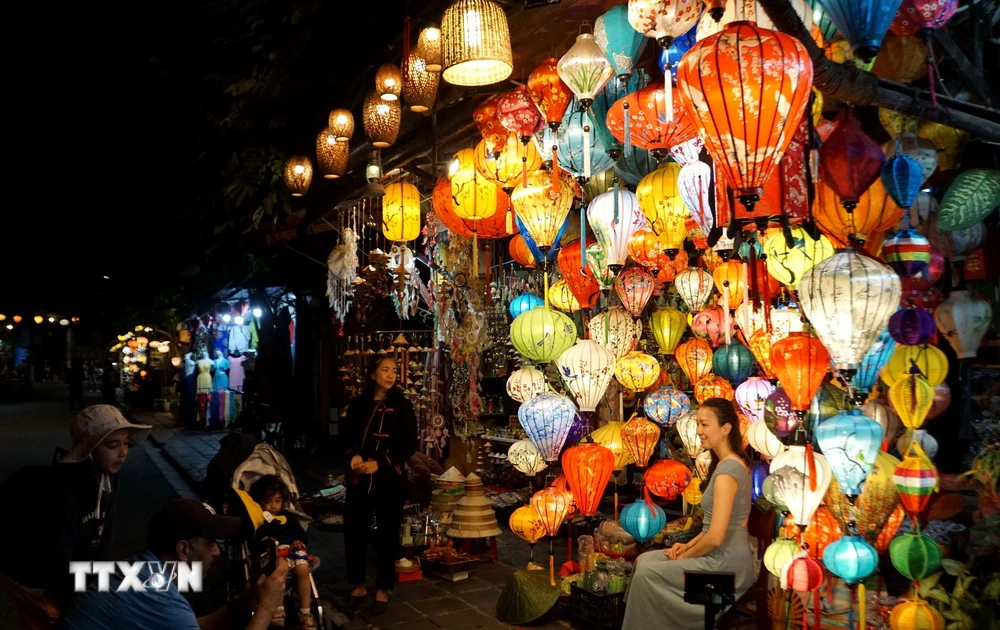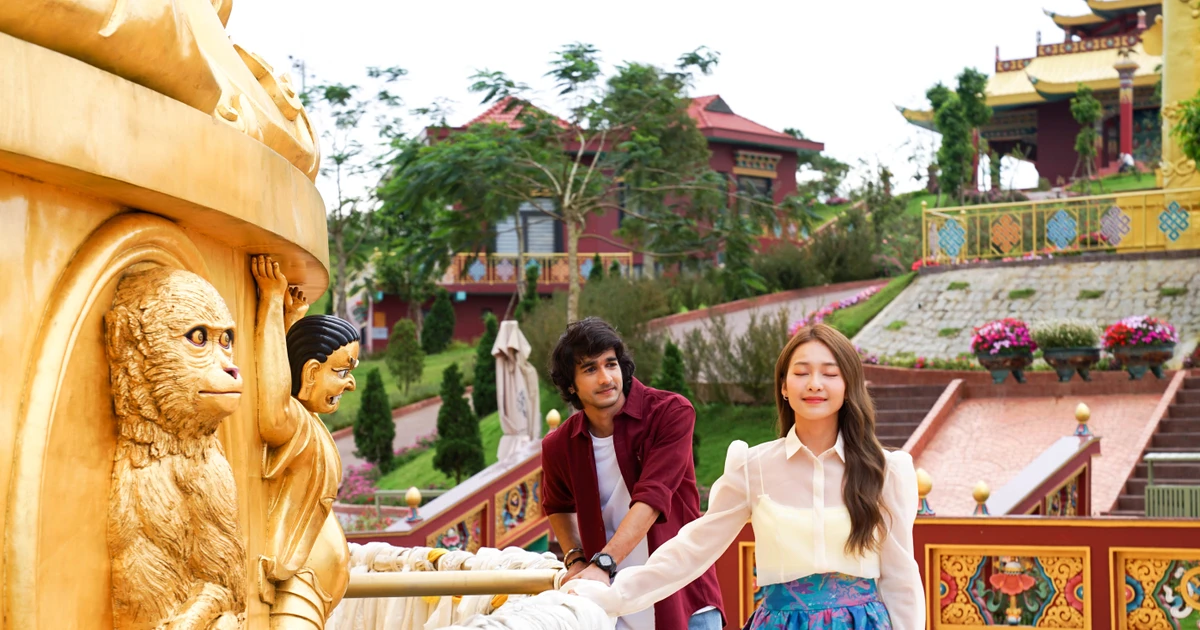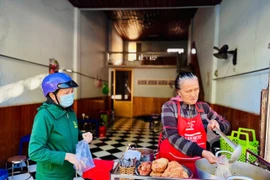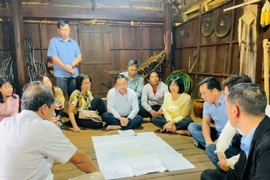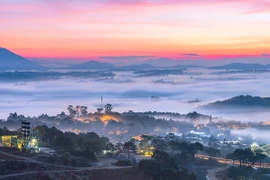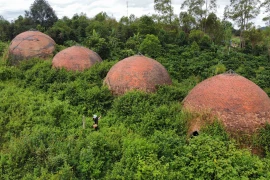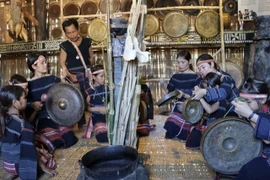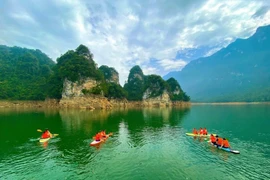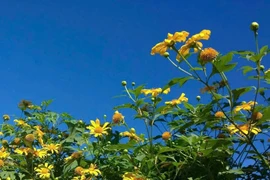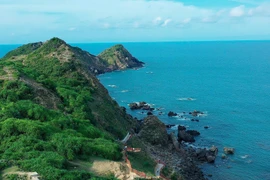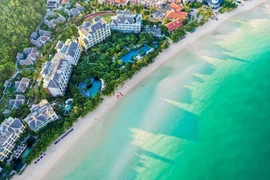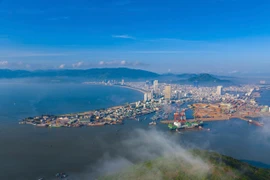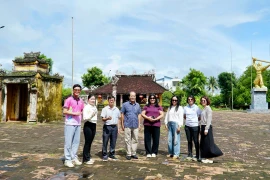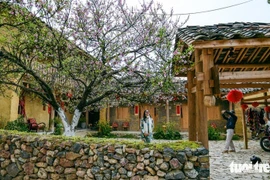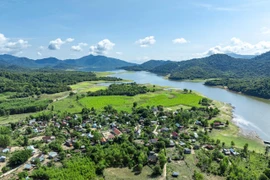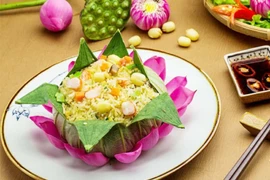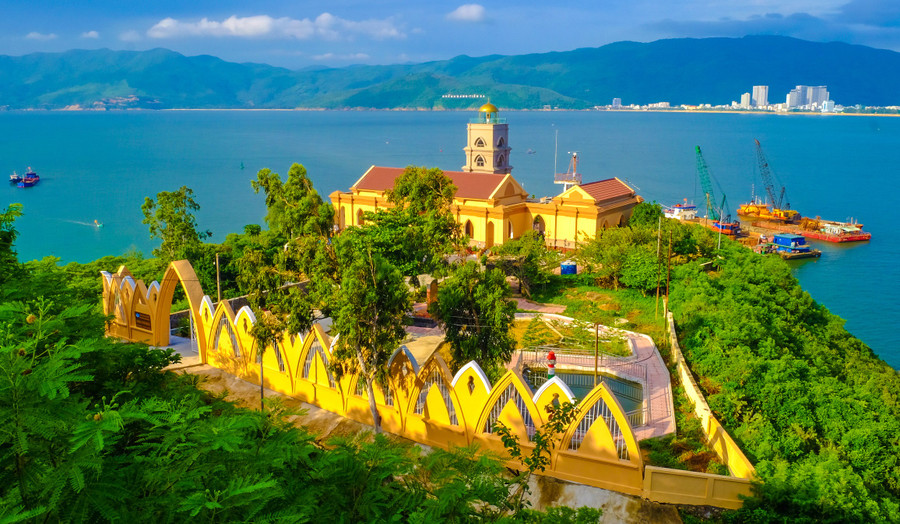
Nestled across the Quy Nhon estuary in Quarter 9, Quy Nhon Ward, Gia Lai Province, this centuries-old community retains its slow, simple rhythm and the timeless beauty of coastal Vietnam.
Divided into two parts, Hai Minh Trong and Hai Minh Ngoai, the village reflects the enduring traditions of fishing and aquaculture. Narrow lanes weave through clusters of homes, stone embankments line the shore, and the green Phuong Mai Mountain rises behind the compact seaside rooftops.
Overlooking the village is the statue of national hero Tran Hung Dao, standing atop the mountain peak. Below it lies the century-old Phuoc Mai Lighthouse, whose nightly beam still guides fishing boats navigating the Quy Nhon Bay. Renovated last year, the lighthouse complex now features scenic viewpoints and photo spots that draw both locals and visitors.

Within the grounds stands the historic Ho Ky fortress gate and the ancient Phuong Mai stone ramparts, remnants of the Tay Son and Nguyen dynasties that once defended the Quy Nhon estuary. At the mountain’s base stretches Ran Beach, known for its golden sand, rock formations, and sea caves of varied shapes.

Despite gradual modernization and more spacious homes, the villagers’ lives remain tied to the sea. Hai Minh residents continue to “eat with the waves and speak with the wind”, their livelihood shaped by the tides. Along the coast, visitors often see fishermen mending nets, sorting their catch, or preparing their boats under the soft glow of sunlight.
From Hai Minh Ngoai, travelers can take a short boat trip past floating seafood farms to reach Hai Minh Trong, a smaller settlement at the foot of Phuong Mai Mountain. Here, winding alleys and red-tiled roofs create a nostalgic scene, with smoke rising gently from kitchen hearths at dusk.
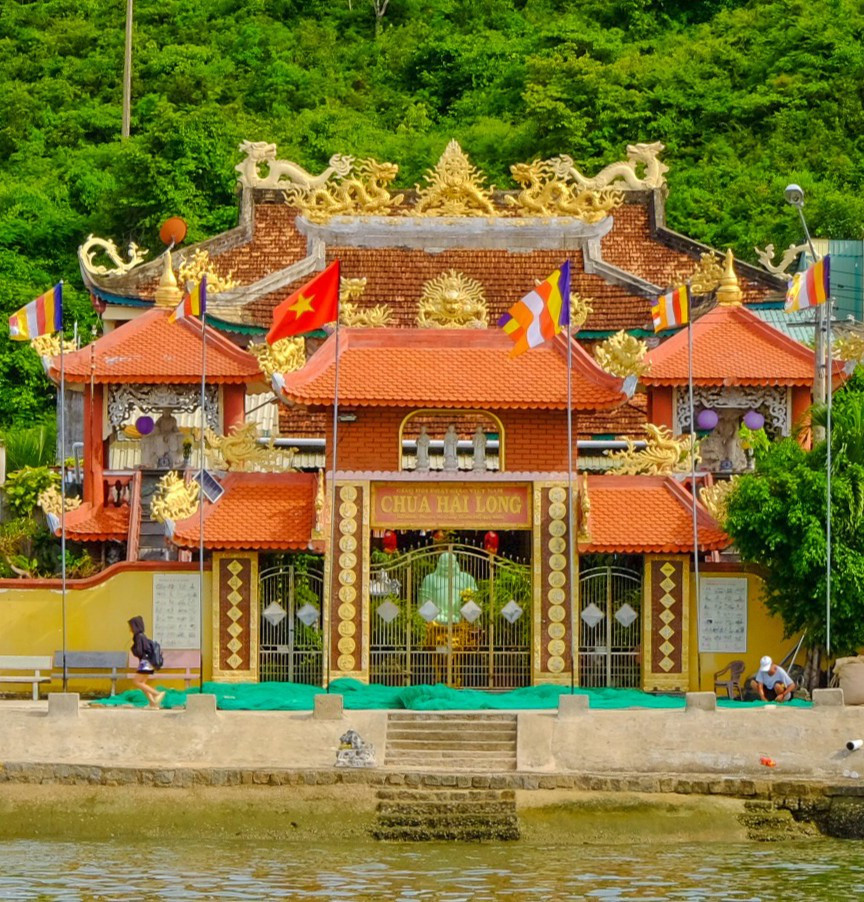
A local highlight is the Tam Toa Mountain God Temple, a cultural and historical site honoring the ancestors who settled and developed the land.
As Quy Nhon continues to grow into a major coastal tourism hub, Hai Minh fishing village remains a peaceful haven, where the salty scent of the sea mingles with the warmth and sincerity of its people, preserving the soul of Vietnam’s maritime heritage.
